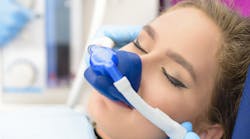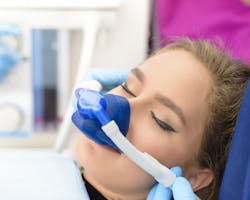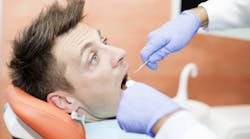The bliss that incorporating sedation dentistry can bring to your practice
One of the most overlooked advantages of being in the dental profession is that any general practitioner has the ability, through the evolution of continuing education, to become talented in arenas once reserved for specialists. There is a myriad of continuums that enable GPs to master orthodontics, endodontics, and implantology.
It wasn’t always like this. I can tell you firsthand that 35 years ago, much of the available CE informed GPs of the possibilities for their patients when referring to a specialist. Of course this axiom remains true in the medical world today. If you’re a primary care physician and your office is not performing as it once was, you cannot sign up for a 12-month continuum on plastic surgery. Sedation dentistry is an amazing advantage exclusive to dentistry, and the question that you should be asking is, “What new skill set would provide the biggest impact to my practice?”
All of the aforementioned skills will help build your practice. But if you want a new service that will blow up your phones, the answer is oral sedation. There are many various enteral sedation protocols available. As in any new arena, you will need to do due diligence to see what works best in your hands and in your facility. This doesn’t take long, and here’s what’s astounding: other than appropriate patient selection, there is no specific skill set required. If you adhere to the guidelines, the first time you administer the recommended medications, your patient will be just as safely and predictably sedated as someone with my experience. I’ve completed over 15,000 cases.
The world of patients with bad dental experiences is much broader than you may realize. Some of these people are resigned to failed attempts of random combinations, designed to get them to a place that allows comfortable dental care. Although this a bold statement, after 22 years and a 99% success rate, I can state that it’s rare not to achieve the level of sedation that allows me to provide the planned treatment. Then guess what happens next? Patients tell everyone they know!
Achieving excellence in ortho, endo, or quite frankly, most of your services does not necessarily lead to a plethora of new patients. Even patients with great smile makeovers may be reluctant to shout it to the world because they would rather others think it’s their natural smile. On the contrary, successfully treated fearful patients become your instant cheerleaders and will refer. They will go online to provide testimonials.
It makes marketing easier
Beyond the coveted word of mouth referrals, a sedation practice is one of the easier services to externally market. Why? Because most of your colleagues are not willing to jump through the hoops of becoming state certified (which is actually pretty easy in most states), or they fear the unknown. My observation after teaching this for over 15 years is that very few clinicians follow through and incorporate sedation in their practices, which makes you all the more unique.
Unlike orthodontic, endodontic, or even esthetic skills, the office that offers sedation stands out from the rest. It has been my observation that this is the number one driving force behind patients willing to go out of network for your care.
The second block of this triad is the atraumatic removal of teeth. Patients who seek your care often have abundant pathology, and your treatment plans will require extractions. Surprisingly, removing even difficult broken-down molars has a short learning curve. There are several live, hands-on courses around the country to facilitate this skill. I advocate: (1) treating only ASA 1 and 2s; (2) no third molars, and (3) no sedation for children. Even with these somewhat stringent guidelines there will be abundance of patients for you to treat.
The final block of the triad follows this premise: if in fact you can perform an atraumatic extraction, then it becomes natural to incorporate both surgical and prosthetic implant dentistry into your services. Although the digital world has revolutionized implant treatment planning, in many cases the best surgical guide is the socket you just created! Obviously there’s a wide range of knowledge to acquire to become proficient in implant dentistry. Taking on implant dentistry is literally a lifetime commitment to implant CE. However, dentists can incorporate well-planned predictable implants early in their training.
Insurance influence, increased competition, and a patient base motivated by tight dollars have merged to prevent many practices from reaching their previous levels of success. I believe that following the protocols presented here will offer a clear path to the return of the independence we once enjoyed. This isn’t a theory; it’s a blueprint that works.
You no longer have to imagine
Imagine a day in the office where you see only four or five primary patients. You aren’t running around from room to room providing single crowns in maloccluded dentitions. You’re executing well-thought-out treatment plans because this is a must when treating patients under enteral sedation. Your goal is to minimize the number of sedation visits required, and each visit needs to be thoroughly planned. You operate in a darkroom with soothing music. The office has less traffic and there is a palpable calm that both staff and patients can feel. You’ve already been paid (part of the protocol), so the office experiences rare broken appointments or cash flow worries. It’s now commonplace for out-of-network patients to seek treatment in your office.
Most of all, your professional life has clearly changed direction for the better. You don’t have to imagine any longer. This office is much closer for you than you might realize. As always, your job now is to turn these ideas into action.




